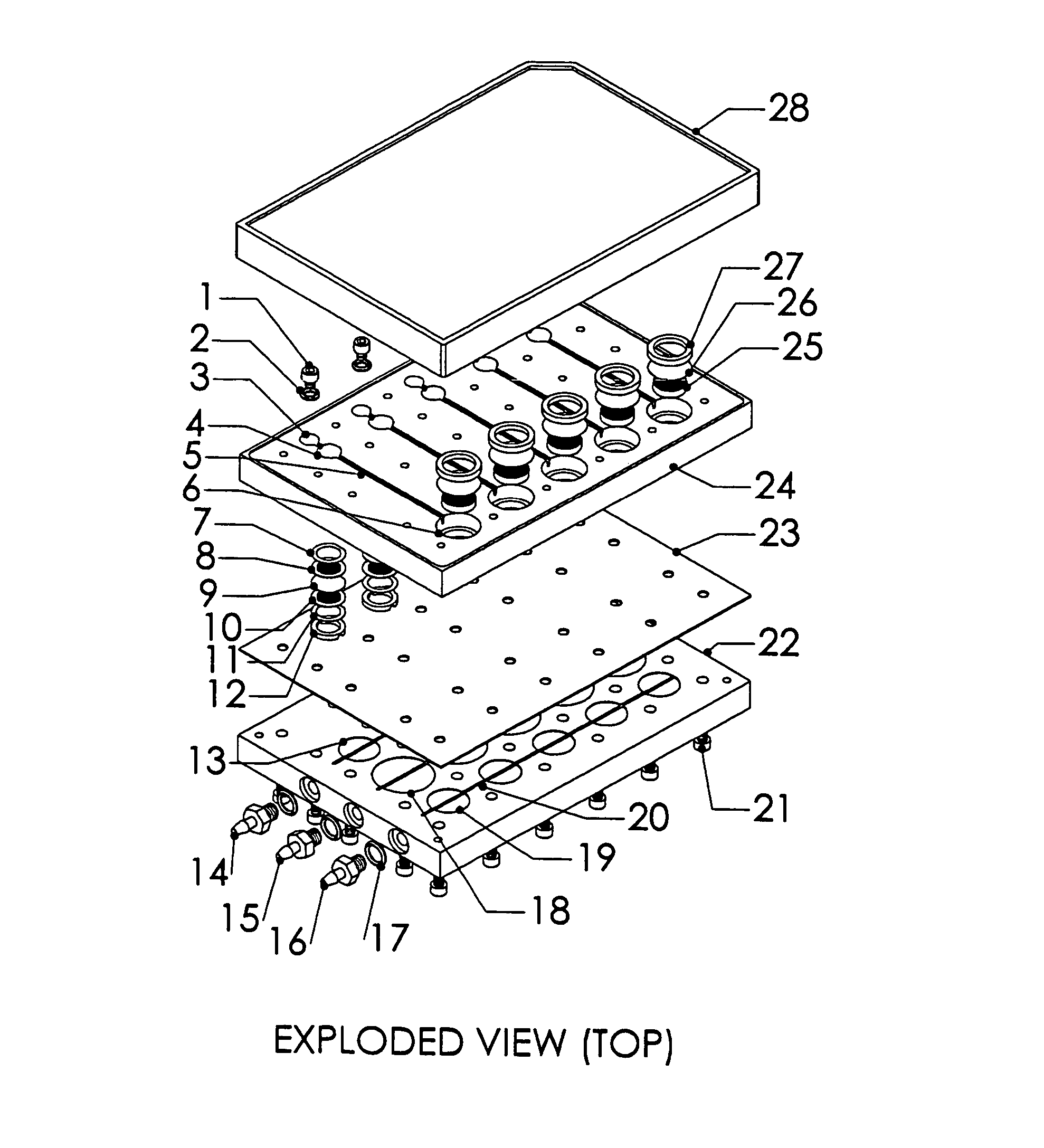Perfused three-dimensional cell/tissue disease models
a three-dimensional, cell/tissue technology, applied in the field of arrays of perfused bioreactors, can solve the problems of difficult control using standard processing techniques, device limitations, and inability to use tissue as diagnostic or screening tools, and achieve the effect of facilitating perfusion
- Summary
- Abstract
- Description
- Claims
- Application Information
AI Technical Summary
Benefits of technology
Problems solved by technology
Method used
Image
Examples
Embodiment Construction
I. System
[0024]A system, and methods of manufacture and use thereof, have been developed based on a perfused micromatrix approach modified to utilize highly parallel means for circulating cell culture medium through the micromatrices of tissue or organ structures, making the technology exceedingly suitable for high throughput assays. This system has applications in testing drug toxicity, models of cancer metastasis, stem cell culture, and other human disease models. The system has as its basic components a dense array of perfusion bioreactor and reservoir pairs for cell or tissue culture, and valves and pumps actuated in parallel via common control channels and re-circulating medium through the array of bioreactor and reservoir pairs. Each bioreactor of the array includes a bioreactor well and its own reservoir well. The bioreactor wells and reservoir wells are connected by fluidic channels allowing re-circulation of cell culture medium. Each bioreactor / reservoir pair is fluidically...
PUM
| Property | Measurement | Unit |
|---|---|---|
| size | aaaaa | aaaaa |
| thickness | aaaaa | aaaaa |
| volume | aaaaa | aaaaa |
Abstract
Description
Claims
Application Information
 Login to View More
Login to View More - R&D
- Intellectual Property
- Life Sciences
- Materials
- Tech Scout
- Unparalleled Data Quality
- Higher Quality Content
- 60% Fewer Hallucinations
Browse by: Latest US Patents, China's latest patents, Technical Efficacy Thesaurus, Application Domain, Technology Topic, Popular Technical Reports.
© 2025 PatSnap. All rights reserved.Legal|Privacy policy|Modern Slavery Act Transparency Statement|Sitemap|About US| Contact US: help@patsnap.com



